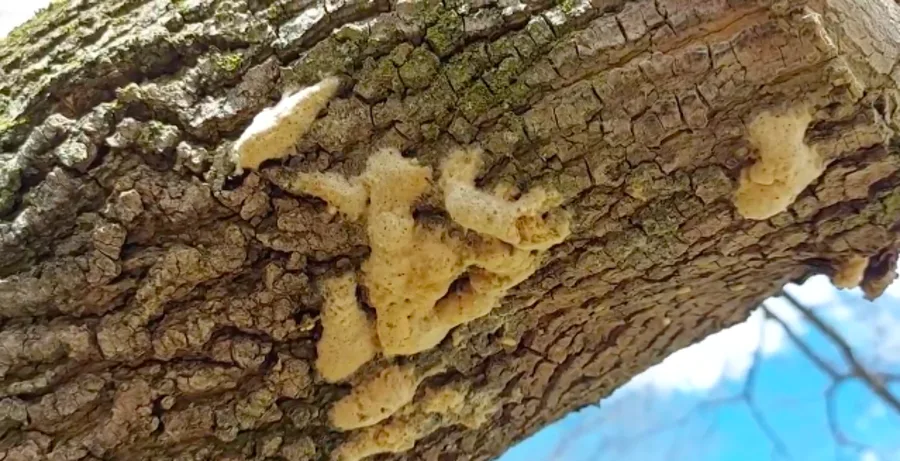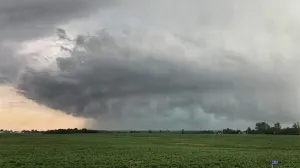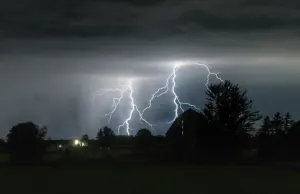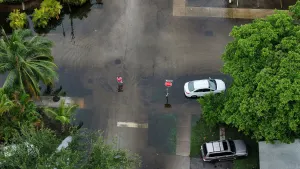
This destructive bug is back in parts of southern Ontario
Last year was described as the worst moth infestation in Ontario’s history, which has many people wondering what type of season we can expect this year.
According to Toronto and Region Conservation Authority (TRCA), certain areas were hit really hard. For example, some trees were completely defoliated and it looked like winter in June. Jozef Ric, Supervisor of Tree Nursery Natural Resources Management with Parks, Forestry and Recreation with the City of Toronto, says that this year, 14 wards are going to be affected by LDD moths (Lymantria dispar dispar), and there is going to be a big focus on High Park, especially since it is Black Oak Savannah—and these moths love oak trees.
“When it happened in High Park last year, 100 per cent of the oak trees were completely defoliated, that was sad to see,” said Ric. “We can't afford another year of complete defoliation, we will try to prevent that.”
According to TRCA, the Ministry of Northern Development, Mines, Natural Resources and Forestry recorded almost 1.8 million hectares defoliated last year. While this year isn't projected to be as historically destructive as last year, the agency is predicting that parts of the Greater Toronto Area could experience a ‘severe outbreak’ this year.
“Right now in mid-April, LDD exists in the form of egg masses. You'll see these small sort of brown, tanny, color masses on any hard surface. These egg masses are just waiting to hatch, and that’s going to happen in a couple weeks,” explained Karen McDonald, Senior Manager of the Ecosystem Management Team at the TRCA.

LDD moths start in the form of small, brown egg masses that can appear on any hard surface. These egg masses are waiting for the right temperature to hatch. (The Weather Network)
The city’s main focus is protecting canopies and controlling these outbreaks. For the City of Toronto, that’s been done by using aerial sprays of BTK (Bacillus thuringiensis var. kurstaki) over affected areas, and that will continue this year. The application is done three to 10 days later.
“The pesticide has a very short life span, so you have to do it twice,” said Rick. “We do the first application in early June or late May, and that's when the caterpillars start to hatch from the eggs.”
“There are over 400 trees that can host them, and one caterpillar eats at least one-square meter of leaves in their lifetime, so whenever there is an outbreak, that results in a lot of defoliation of trees,” added McDonald.
WATCH: HAVE YOU SEEN THIS FURRY EGG SACK AT YOUR HOUSE? HERE'S WHAT TO DO NEXT
Egg mass surveys are conducted every year to measure different factors of what will happen the following spring. On the bright side, outbreaks occur every seven to 10 years. McDonald said that it looks like this current outbreak is on the decline, after reaching its peak in 2021.
The city says that while trees refoliate late-July, it requires a lot of energy and they remain stressed. And then when their leaves grow back the following year, and the defoliation happens again, they are more vulnerable to other insects and death.
Caterpillar, weather, and leaf size all are variables when it comes to exact aerial spray dates, but more information can be found on the city’s website, and residents impacted will be notified through mail. A map on the website also allows you to see if you live in the affected area.
Spongy moths are unfortunately in our landscapes, and there’s no way to completely eradicate them. But there are several ways that you can learn to cope with them. This includes knowing how to remove them off your property.
Toronto and Region Conservation Authority suggests taking a knife, or something firm to scrape the egg masses off of trees or any hard surfaces on your property.
“If you scrape them onto the ground, those eggs will still hatch and you aren’t helping the situation,” noted McDonald. “So you want to scrape them into soapy water which will kill the eggs, and then dispose of them in the garbage. After the eggs have hatched and the caterpillars are small, what you can also do is tie a burlap band around your tree to try to catch the caterpillars. You empty the caterpillars into a pail of soapy water, kill them and discard them.”
Toronto and Region Conservation Authority adds that while there are some hacks you can find online, some of them may do more harm than good.
“We do not recommend applying tape to your trees because this is going to catch everything, not just LDD moths. We’ve seen terrible examples where this double sided really sticky tape has entrapped birds. We’ve also seen some examples where snakes have been entrapped on the sticky tape. The best option is really the burlap method,” said McDonald.
To learn more about the LDD moth infestation across Toronto this year, please watch the video that leads this article.









